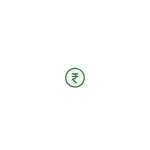Fixed Deposit vs Recurring Deposit: 10 Key Differences & Know Which is Best for You

Deciding between Fixed Deposits (FD) and Recurring Deposits (RD) can be challenging. FD and RD are popular fixed-income instruments that offer reliable returns and are backed by regulated entities, ensuring capital safety. With deposits up to Rs. 5 lakhs insured by DICGI, both ensure your money is safeguarded. So, how do you differentiate between FD and RD?
When comparing FD vs. RD, considering factors like interest rates, investment flexibility, and the purpose of savings becomes essential. While FD allows a lump sum investment, RD entails regular contributions. Before diving deep, using an ‘FD vs. RD calculator’ might be handy.
The core difference between FD and RD often boils down to individual financial goals and surplus availability. This article will unravel the nuances of RD and FD, helping you determine which is better for your needs.
What is a Fixed Deposit
A fixed deposit (FD) is a type of term deposit offered by banks and select other financial institutions. With a fixed deposit, you agree to deposit a certain amount of money for a specific period of time, known as the term of the deposit. In return, the bank pays you a fixed rate of interest on your deposit for the duration of the term.
Fixed deposits are generally considered to be a safe and stable investment option, as they offer a guaranteed return on your money. They are typically used by people who have a large amount of money to save and who do not need access to that money for a specific period of time.
Also Read: Experience financial growth with unmatched Bajaj Finance FD Rates
Here’s an example of how a fixed deposit works:
- Let’s say you have 10,000 INR that you want to save for a year.
- You decide to open a fixed deposit account with a bank, and agree to deposit 10,000 INR for a term of one year.
- The bank offers you an interest rate of 5.5% per year on your deposit.
- At the end of the one-year term, the bank will pay you 550 in interest on your deposit (5.5% of 10,000).
- You can either choose to withdraw your money and the interest earned, or you can choose to roll over the fixed deposit for another term and continue earning interest.
What are Recurring Deposits
A recurring deposit (RD) is also a term deposit offered by banks and other financial institutions. With a recurring deposit, you agree to make regular,relatively smaller deposits over the term of the deposit, rather than making a single lump sum deposit as in the case of an FD. The interest rate on a recurring deposit is typically lower than the interest rate on a fixed deposit (FD), because the bank only has the use of the deposited amount for the duration of that particular deposit.
Recurring deposits are a good option for individuals who want to save money on a regular basis, but who may not have a large amount of money to deposit all at once. They are also generally more flexible than fixed deposits, as you have the option to make additional deposits or withdraw your money ( you will usually have to pay a penalty to do so).
Here’s an example of how a recurring deposit works:
- Let’s say you want to save 5000 INR monthly for a year.
- You decide to open a recurring deposit account with a bank and agree to make monthly deposits of 5,000 INR for a term of one year.
- The bank offers you an interest rate of 5.5% per year on your deposits.
- At the end of the one-year term, the bank will have received 60000 INR in deposits from you.
- The bank will pay you interest on your deposits amounting to 1782.24 INR, calculated at the agreed-upon rate of 5.5% per year.
- You can either withdraw your money and the interest earned or roll over the recurring deposit for another term and continue making regular deposits and earning interest.
Fixed Deposit vs. Recurring Deposit
Here are the differences between FD and RD:
Common Features of RD & FD
FDs and RDs come with a lot of common features. Let’s take a look at some of them.
| Parameters | Fixed Deposit | Recurring Deposit |
| Frequency of deposit | Lump sum amount once | Every month |
| Tenure | 7 days to 10 years | 6 months to 10 years |
| Tax Benefits | An exemption on investment of up to Rs. 1.5 lakh in the case of tax-saver FDs with a tenure of 5 years | No such exemption |
| Who should invest | Someone with a lump sum amount looking to invest it in one go | Someone with a steady income stream looking to invest savings periodically |
| FD vs. RD Interest Rate | Available | Not available |
| The lump sum amount once | 3.00% to 7.00% | 3.5% to 8.5% |
| Payouts | Monthly, Quarterly, or yearly payouts. | Returns are only realized at the end of maturity with a lump sum payment. |
| Default | Month-in-month out payments typically. | Failure to pay instalments 6 months in a row can lead to the institution cancelling the account. |
| Investment Type | One-time investment | Automatic Renewal |
| Minimum Amount | Rs 100. | Rs 10. |
Fixed Interest Rates: RD and FD provide predetermined interest rates at the time of investment, ensuring that investors know the exact returns they can anticipate.
Top Security: RD and FD are regarded as secure investments because they are both the work of licenced financial institutions. The Deposit Insurance and Credit Guarantee Institution (DICGI) insures Rs. 5 lakh deposits in both instruments.
Tenure options: RD and FD offer various tenure options, allowing investors to select the length of time that best meets their financial objectives, ranging from a few months to several years.
Tax Deduction at Source (TDS): In accordance with the relevant tax rules, interest earned on both FD and RD is subject to TDS.
Premature Withdrawal: RD and FD allow for early withdrawal, although doing so may result in a fee or a lower interest rate.
Loan against Deposit: Investors with FD and RD deposits may apply for loans against them, converting their savings into a credit source when necessary.
Nomination Ease: FD and RD provide a nomination function that enables account holders to designate a beneficiary to receive the funds in the event of the depositor’s passing.
Compounding Methodology: RD and FD interest are typically compounded quarterly, implying that the interest from one quarter is added to the following quarter’s calculation principle.
Simple to Open: RDs and FDs are simple to open at any bank or financial institution, and with the advent of online banking, they are also readily managed and tracked electronically.
Option for Periodic Interest Payout: FDs typically give customers the choice of receiving interest payments at set intervals, such as monthly, quarterly, or yearly. While RDs, on the other hand, compound interest, both share the ability to earn interest at regular periods.
Fixed Deposit vs Recurring Deposit – Which deposit can earn you more?
The choice between Fixed Deposits and Recurring deposits is entirely dependent on the kind of financial lifestyle that you choose. Although FDs can also hand out monthly interest payouts, given the difference in investment amount, RDs can be a better option. That being said, let’s take a look at which scheme offers better rewards:
Investment Magnitude: Given that you invest a large sum of money upfront for FDs, the subsequent interest amount is also higher. When it comes to RDs, given that you invest a smaller amount every month, only the first-month tenders the interest payout for the full tenure, and the next month earns a little less as you get closer to the maturity date.
Rate of Interest: Although the RD and FD rates can be similar for the same bank, the difference in tenures and investment amount will also give out a difference in the rate. FDs, in this case, take the upper hand, given the longer period and value of the investment.
Tenure and Compounding: Given the longer period of investment and principal investment paid upfront, FDs tend to have a larger return compounding in comparison to RDs.
From a purely investment maximisation standpoint, FDs tend to give out a better ROI in comparison to RDs. But then again, you must evaluate your financial lifestyle and see what suits you better.
Interest Rates Offered for RD & FD From Banks
Here’s a short list of some of the household names in the banking industry:
| Name of the bank | RD Rates | FD Rates |
| Axis Bank FD | 3.00% to 7.75% | 3.00% to 7.75% |
| YES Bank FD | 3.25% – 8.25% | 3.25% to 8.25% |
| HDFC Bank FD | 3.00% to 7.75% | 3.00% to 7.75% |
| State Bank of India FD | 3.00% to 7.6% | 3.00% to 7.60% |
| RBL Bank FD | 3.50% to 8.3% | 3.50% to 8.30% |
| Kotak Mahindra Bank FD | 2.75% to 7.75% | 2.75% to 7.75% |
| Canara Bank FD | 4.00% to 7.75% | 4.00% to 7.75% |
Which is Best & What Should You Choose: FD or RD?
The thing to know between Fixed Deposits and Recurring Deposits is not a one-size-fits-all answer. Your choice between FD and RD should be rooted in your individual financial objectives, liquidity needs, and investment temperament. Here’s a more detailed outlook to assist you in making an informed decision:
Liquidity Preferences: FDs, having a larger principal amount, might restrain your liquidity. If you feel you might need access to your funds periodically, then RDs, with their monthly contributions, offer a bit more flexibility. Breaking an FD prematurely might lead to penalties or reduced interest.
Savings Discipline: If you’re someone who struggles with maintaining a disciplined saving routine, RD can be your companion. Consistent monthly deposits can instil a habit of saving. On the other hand, if you’ve amassed a significant amount and aim for a one-time investment, FD is your ally.
Investment Horizon: Your investment duration also plays a pivotal role. If you foresee a large expense a few years down the line and have a lump sum now, parking it in an FD might be more fruitful. However, an RD might be more fitting if you’re saving for a nearer goal, like a vacation or a gadget.
Risk Appetite: FD and RD are low-risk instruments, but if you’re extremely conservative and prefer consistent small savings over a lump sum lock-in, RD might be more appealing.
Return Expectations: If the maximal return on your investment is the primary objective, FDs usually have a slight edge due to the compounding benefits on a larger principal from day one. However, the difference might not be massive, especially if the interest rates are close.
Final Thoughts
As you have seen, RD and FD have both similarities and differences. While both give near risk-free returns and are not affected by market changes, the effective interest on FDs turns out to be higher than that on RDs, this is more obvious in the case of a cumulative FD.an RD lets you create a substantial corpus from small monthly savings in contrast to an FD that demands for a one-time lump-sum. When choosing between RD vs FD, you must consider the surplus amount in hand, the interest rates offered and the financial goals you are aiming to achieve.
FAQs
What are the benefits of investing in FDs?
The benefits of investing in an FD are:
Fixed returns: FDs offer fixed rates of interest on the deposit amount. These returns are not market-linked and hence are not subject to any fluctuation
Low-risk: Bank FDs are regulated by RBI. Also, deposits of up Rs. 5 lakh are insured by the Deposit Insurance and Credit Guarantee Corporation. Hence the underlying risk is little to non-existent.
Hassle-free: FDs can be opened online in a few clicks. You can transfer an FD, avail loan on it and can also renew it automatically.
Continuous income: By investing in a non-cummulativeFD scheme, you can ensure a regular flow of income in the form of interest.
Tax Benefit: You can claim tax benefits for a deposit of uptoRs. 1.5 lakh in tax-saver FDs under section 80C of the Income Tax Act
What are the disadvantages of a fixed deposit account?
Some of the disadvantages of investing in FDs are:
Low interest rate: The interest rate on FDs is usually lower than returns from other market-linked instruments
Taxation: Interest income from FD is taxable, and a TDS is also deducted
What does the interest rate on RDs depend on?
The interest rate on RDs depends on:
Age of the investor: Senior citizens get higher interest rates on an RD
Bank: The interest rates differ from bank to bank; small finance banks offer higher interest
Tenure of the RD: Longer the tenure, the higher the interest rate
Can I change the RD amount in between?
Once an RD has started, you cannot change the amount or the tenure of the RD.
Which is better: a short-term FD or a long-term FD?
Longer-term FDs come with higher interest rates. Therefore, if you can lock your investment amount for a longer period, you could consider opting for a long-term FD.
Which is better: recurring deposit or SIP?
Both these savings schemes are beneficial for those having a regular income stream. A recurring deposit earns interest from being a term deposit, while a SIP invests in a bucket of equity or debt instruments. The latter is the riskier of the two and is subject to market fluctuations. SIP offers better returns over the long-term investment horizon. A recurring deposit gives assured returns and secures the deposited capital. However, premature withdrawal from RD could attract some penalties. Depending on your risk appetite and investment horizon, you can select either SIP or a recurring deposit.
Is there a monthly or quarterly interest payout option in RD?
No, RD interest is compounded and paid out at maturity.
Are FD and RD Interest Rates the same?
Often, but not always. It depends on the bank’s policies and current financial market conditions.
Does an FD or RD have a higher interest rate?
Generally, FDs and RDs have comparable interest rates within the same bank, but FDs might offer slightly higher rates for longer tenures.
Once an RD starts, can I change the tenure or the instalment due date?
No, you cannot alter the tenure or instalment due date once an RD is initiated.
How do the banks calculate the maturity amount on RD?
Banks calculate RD maturity amounts using compound interest, typically on a quarterly basis, taking into account the monthly contributions and tenure.
Can I convert RD to FD?
No, RDs and FDs are distinct financial instruments. However, upon RD maturity, you can invest the matured amount in an FD.







